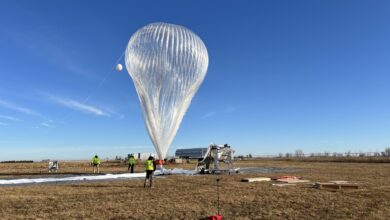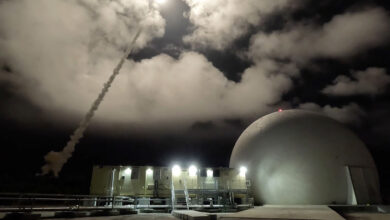Bayraktar TB3 Takes Off, Lands on Short-Runway Ship for First Time
A Bayraktar TB3 drone has successfully taken off and landed on the short-runway ship TCG Anadolu for the first time, Turkish developer Baykar announced.
Following takeoff, the drone conducted a 46-minute flight test between the Aegean and Mediterranean seas before successfully landing on the vessel.
The company stated that this unmanned aerial vehicle (UAV) trial “marked a world first” and “opened the doors to a new era in both aviation and maritime history.”
#BayraktarTB3 PT-2 🤝 TCG Anadolu ✈️🚢⚓️🚀
Dünya Havacılık Tarihinde Bir İlk!
✅ Kısa Pistli Gemiden Kalkış-İniş Testi
☁️ Toplam Uçuş Saati: 823 SaatA groundbreaking moment in aviation history!
✅ Short-Runway Carrier Take-Off & Landing Test
☁️ Total Flight Hours: 823… pic.twitter.com/STnmuewlTK— BAYKAR (@BaykarTech) November 19, 2024
Features
The Bayraktar TB3 UAV is capable of autonomous take-off and landing, designed primarily for reconnaissance, surveillance, and intelligence operations.
It can be equipped with smart weapons allowing for attack missions.
The drone features a payload capacity of 280 kilograms (617 pounds) and a maximum take-off weight of 1,450 kilograms (3,197 pounds), reaching a top speed of 160 knots (296 kilometers/183 miles per hour).
Previous Tests
First unveiled in 2023, the Bayraktar TB3 is the latest UAV developed by Baykar. It has undergone numerous tests before entering the mass production phase last month, as announced by the company’s CEO Haluk Bayraktar.
Baykar also revealed that it expects exports to begin within six months, according to the state news agency.
In June, the Bayraktar TB3 successfully completed a High Altitude System Performance Test, reaching an altitude of 36,310 feet (11,067 meters).
During a trial in May, the drone demonstrated its capabilities by flying with the integrated ASELFLIR-500 Electro-Optical Reconnaissance, Surveillance, and Targeting System.
To date, the UAV has accumulated over 700 hours of flight testing, including a 32-hour continuous flight in December last year, covering a distance of 5,700 kilometers (3,541 miles).












